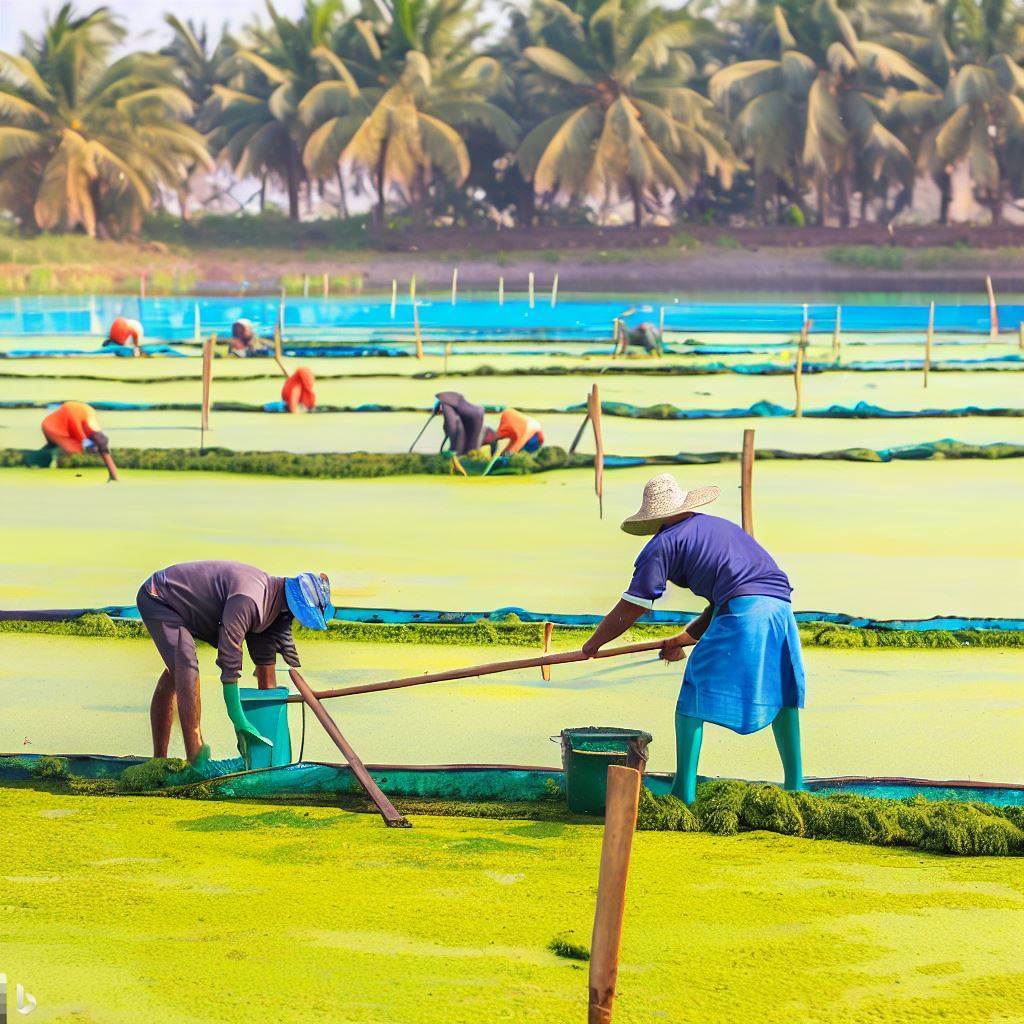Spirulina farming is an emerging and sustainable source of nutrition that has been gaining popularity in recent years due to its rich nutrient content and potential health benefits. Spirulina is a blue-green alga that is rich in protein, vitamins, minerals, and antioxidants. It is a complete protein source that contains all the essential amino acids required by the human body. Spirulina cultivation is relatively easy and can be grown in fresh and saltwater environments. In this article, we will discuss the cultivation practices for high-yield spirulina farming.
Introduction to Spirulina Farming
Spirulina farming is a type of aquaculture that involves the cultivation of spirulina in controlled environments. Spirulina is a unicellular organism that can grow in a wide range of environmental conditions, including high temperatures and salinity. Spirulina cultivation involves the use of open ponds, closed systems, or a combination of both to create a controlled environment that promotes the growth of spirulina.
Environmental Requirements for Spirulina Farming
Spirulina is a versatile organism that can grow in a wide range of environmental conditions. However, there are some specific requirements for optimal spirulina growth and yield. These requirements include:
- Light: Spirulina requires intense light for photosynthesis. A light intensity of at least 100,000 lux is recommended for optimal growth.
- Temperature: Spirulina can grow at temperatures ranging from 20°C to 35°C. However, the optimal temperature range is between 30°C and 35°C.
- pH: The optimal pH range for spirulina growth is between 8.0 and 9.5. Spirulina can tolerate a pH range of 6.5 to 11.0, but growth and yield will be lower outside the optimal range.
- Nutrients: Spirulina requires a range of nutrients for growth, including nitrogen, phosphorus, potassium, magnesium, and iron. The optimal nutrient levels depend on the strain of spirulina being cultivated.
Cultivation Practices for Spirulina Farming
Spirulina farming can be done using open ponds or closed systems, such as photobioreactors. The cultivation practices for spirulina farming vary depending on the type of system used. In this section, we will discuss the cultivation practices for both open ponds and closed systems.
Open Ponds
Open ponds are the most common type of system used for spirulina farming. The cultivation practices for open ponds are as follows:
- Construction of the Pond: The pond should be constructed with lining material, such as HDPE or PVC, to prevent seepage of water. The depth of the pond should be between 15 to 30 cm, and the length and width can vary depending on the available land area.
- Filling the Pond with Water: The pond should be filled with freshwater or saltwater depending on the strain of spirulina being cultivated. The water should be free from contaminants, and the pH should be adjusted to the optimal range.
- Inoculation: Once the pond is filled with water, spirulina culture is inoculated into the pond. The inoculum can be obtained from a culture bank or from a previous batch of spirulina culture.
- Maintenance: The spirulina culture in the pond should be regularly monitored for pH, temperature, and nutrient levels. The culture should be mixed periodically to ensure uniform growth, and water loss due to evaporation should be replaced regularly.

- Harvesting: The spirulina culture can be harvested once it reaches the desired density, which is typically between 0.5 to 1.0 g/L. The culture is harvested using a fine mesh screen or a centrifuge. The harvested spirulina can be dried and processed into different products, such as powder, capsules, or tablets.
Closed Systems
Closed systems, such as photobioreactors, offer several advantages over open ponds, including higher yield and better control over environmental conditions. The cultivation practices for closed systems are as follows:
- Construction of the Photobioreactor: The photobioreactor can be constructed using glass, plastic, or metal materials. The size and shape of the photobioreactor can vary depending on the desired production capacity.
- Inoculation: Once the photobioreactor is constructed, spirulina culture is inoculated into the system. The inoculum can be obtained from a culture bank or from a previous batch of spirulina culture.
- Maintenance: The spirulina culture in the photobioreactor should be regularly monitored for pH, temperature, and nutrient levels. The culture should be mixed periodically to ensure uniform growth, and the light intensity should be adjusted to the optimal range.
- Harvesting: The spirulina culture can be harvested once it reaches the desired density, which is typically higher than in open ponds, between 2.0 to 3.0 g/L. The culture is harvested using a centrifuge or a filtration system. The harvested spirulina can be dried and processed into different products.
Best Practices for High-Yield Spirulina Farming
To achieve high yield in spirulina farming, several best practices should be followed, including:
- Selection of Strain: The selection of the strain of spirulina to be cultivated is critical for high yield. Different strains have different growth rates and nutrient requirements, and the optimal strain should be selected based on the available environmental conditions and production goals.
- Optimization of Environmental Conditions: The environmental conditions, such as light intensity, temperature, pH, and nutrient levels, should be optimized for optimal spirulina production and yield.

- Use of Nutrient Supplements: Spirulina cultivation can benefit from the use of nutrient supplements, such as urea, potassium nitrate, or sodium bicarbonate, to provide the necessary nutrients for growth.
- Periodic Culture Analysis: The spirulina culture should be periodically analyzed for growth rate, nutrient uptake, and contamination. Any issues identified should be addressed promptly to prevent loss of yield.
- Hygiene and Sanitation: Hygiene and sanitation practices should be followed to prevent contamination of spirulina production. The equipment and facilities should be regularly cleaned and disinfected.
Conclusion
Spirulina farming is a sustainable and promising source of nutrition that has gained popularity in recent years. Spirulina cultivation can be done using open ponds or closed systems, and the cultivation practices vary depending on the system used. To achieve a high yield in spirulina farming, several best practices should be followed, including strain selection, optimization of environmental conditions, use of nutrient supplements, periodic culture analysis, and hygiene and sanitation practices. With proper cultivation practices, spirulina farming can provide a reliable source of high-quality nutrition for human consumption.
Starting a Spirulina farming business in India can be challenging, but with the right skills, knowledge, and support, you can build a successful enterprise. At ffreedom app, we offer a variety of Spirulina farming courses to help you succeed in the Indian market. Our courses cover everything from starting and running a Spirulina farming business to managing and becoming successful in it.
Our courses are designed to give you practical knowledge and skills that you can apply directly to your business. Taught by experienced industry professionals, our courses cater to beginners and experienced Spirulina farming business owners alike.
You can explore our Spirulina farming courses through the following links:
Spirulina farming course in Hindi: https://ffreedom.com/hindi/farming-courses/earn-up-to-one-crore-per-annum-with-spirulina-farming
Spirulina farming course in Telugu:
https://ffreedom.com/telugu/farming-courses/spirulina-farming-course-earn-50000-net-profit-per-month
To learn more about our Spirulina farming courses and how they can help you succeed in the Indian market, download the ffreedom app from the App Store or Google Play Store.



